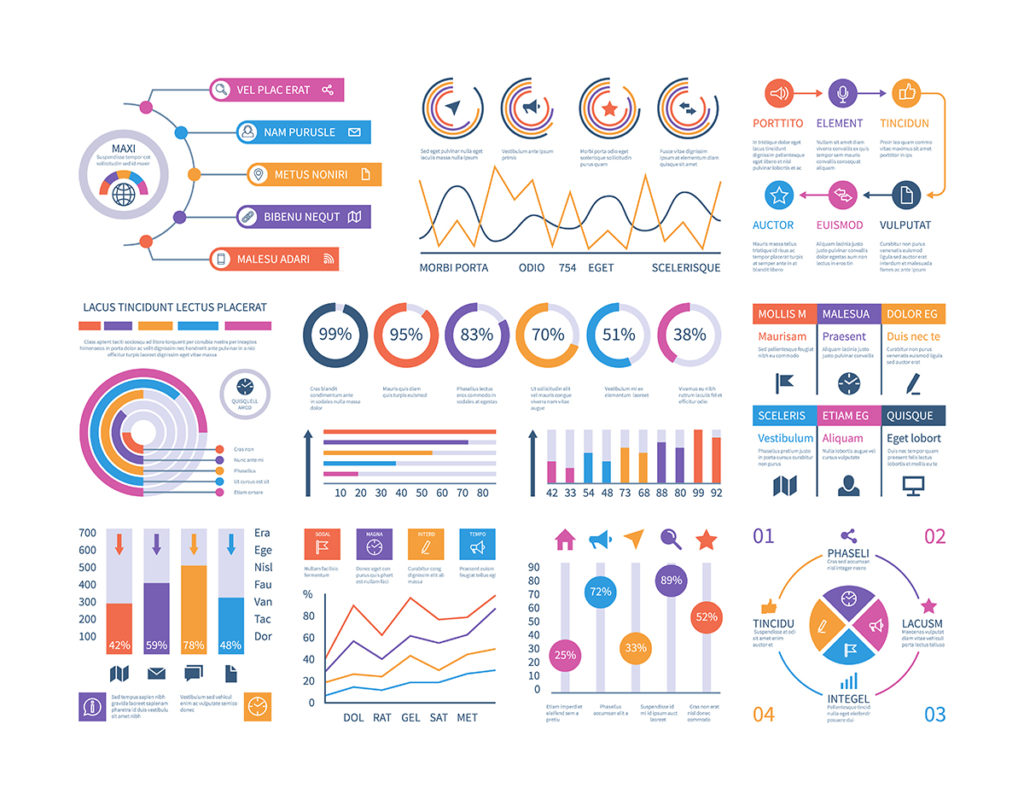
Visualization is the key! Best ways to present your Data
In our day and age, we become better at gathering and examining information, we additionally need to turn out to be better at clarifying what everything implies. Information perception is the utilization of calculations to make pictures (graphical and pictorial) from information so people can easily and effectively comprehend and react to that information. It is significant on the grounds that it empowers us to process a lot of complex information that would somehow be overpowering or hard to comprehend.

It’s anything but exceptional to hear talk about visualization when the subject of information perceptions comes up. The vital factor is in the recurrence with what information is refreshed. Perceptions are produced from information, while information sets are refreshed all the more routinely to exhibit changes inside a dataset.
All in all, where a data set might be viewed as an assortment of assets, an information perception is a solitary portrayal of sets of characterized data. With visualization, there is frequently an intuitive factor that empowers clients to get the right data that they need; making them especially valuable for business clients.

Advantages of Data Visualization:
With clear graphical portrayals of business data, better results can be attained – eventually prompting better dynamics. Different advantages related to information representation include:
- More quick critical decision-making by means of quicker access to business bits of knowledge
- Recognizable proof of connections and examples
- Pinpoint and track arising patterns
- Simplicity of correspondence between parties
- A superior comprehension of functional and business exercises
- Direct interaction with information
There is a wide scope of components that impact what information is utilized and how it is envisioned. A few normal procedures for contrasting all kinds of information perception include:
Two-dimensional information: Often geospatial portrayals on maps. A couple of normal models are:
- Dot mapping: Dots address the ideal variable
- Distance or region cartograms: Focus on a part of a guide for a specific variable
- Choropleth: Using various tones to address various levels of a variable
- Multidimensional information: Covering various measurements or factors. The absolute most normal perceptions that we use to address this information include:
- Histogram: Comparing time-frames with a characterized variable
- Pie diagram: A portrayal of sums by leveling the entirety of data
- Dissipate plot: Demonstrates relationships between two unique factors
Some multidimensional information can likewise be viewed as high-dimensional, which can be comprehended as having a table with bunches of segments. For this situation, further developed methods, for example, the accompanying can be valuable:
- Data-based representation: For looking at numerous mathematical factors and seeing the connections between them
- Scatterplot grid: An assortment of scatterplots coordinated into a matrix
Various leveled information: This kind of perception means to analyze subordinate relations between datasets. A few sorts of progressive perceptions include:
- Determination tree: ‘Hubs’ are associated by ‘branches’ which address the connections between the hubs.
- Sunburst graphs: Each ring or circle addresses a degree of chain of importance, with the deepest circle addressing the top
- Dendrogram: Similar to a tree, however rather uses grouping

It doesn’t make any difference how great your information is if people are seeing it fail to really see what it implies. There are various accepted procedures that can be useful in guaranteeing that your information perception is clear and justifiable.
- Continuously center around your prerequisites first: Start by asking “what choices do we need the clients to have in order to make them reliant on this representation?”.
- Focus on who your audience is: Use recognizable phrasing and try not to add additional experiences and factors. Remember what works for one audience may not work for another, so consider having various adaptations of similar information when required.
- Have a predictable technique: Build an adaptable and repeatable interaction for getting your information and plan visuals.
- Setting is critical: Showing your measurements in an exhibition versus objective way can go far in clarity and comprehension – particularly with the utilization of shading.
- Accentuate information quality: If the information you are utilizing is of low quality, the best perception on the planet will not make it helpful.
- Profile your information: There are a couple of kinds of measurable information:
- Mathematical: Meaning as an estimation (additionally called quantitative information)
- Clear cut: Represents classes that don’t have numerical importance, like individual inclinations (likewise called subjective information)
- Ordinal: A blend of mathematical and downright information that sensibly go together and have a grouping
- Comprehend the distinction in information types on the grounds that various perceptions will be more compelling for various kinds.
- Pick the proper insight strategy: There are a wide scope of procedures that can be helpful in your representation. Endeavor to keep your perception as basic as could really be expected.
Information representation goes from straightforward (line diagrams, pie graphs, dissipate plots and the like) to extensively more complex. This is especially obvious with regards to big data or high-dimensional data, where the interaction and representations justifiably become more convoluted.



